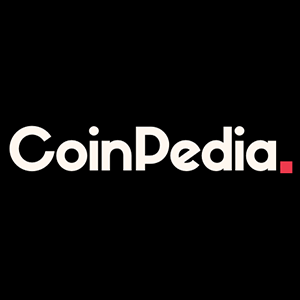Key Takeaways: Tether holds $120B in U.S. debt, more than Germany. The USDT issuer earned $1B last quarter by investing in T-bills and gold, even when crypto prices crashed. Stablecoin demand helps the U.S. sell more Treasury bills, supporting the dollar. Tether now holds $120 billion in short-dated U.S. Treasuries, surpassing Germany’s $111.4 billion and securing 19th place among global investors in Treasury bills. This revelation comes from Q1 2025 data published by the U.S. Treasury Department and confirmed in Tether’s latest financial attestation . Besides growing its Treasury portfolio, Tether also generated over $1 billion in operating profit and $5.6 billion in the last quarter. Gold, T-Bills, and Repos: Inside Tether’s Volatility Shield Tether frames the milestone as proof that it can move dollar liquidity “at scale” while still running a conservative balance sheet. https://twitter.com/Tether_to/status/1917947387936432287 The report shows the stablecoin issuer’s mixed reserve book of $98.5 billion in direct T-bills plus roughly $23 billion in repurchase agreements and cash equivalents. This also includes a growing gold allocation. According to the attestation, gains on Treasurys led the way, and the gold cushion “almost offset” the slide in crypto prices during January and March. Tether noted that this buffer keeps its dollar‑pegged USDT stable even when digital asset markets whipsaw. Tether’s buying spree is not new. In 2024, the company purchased a net $33.1 billion of T-bills, ranking as the seventh‑largest net foreign buyer, bigger than Canada and Germany. Analysts say the purchases underline how dollar‑linked stablecoins now support demand for U.S. government debt and, by extension, for the greenback itself. Lawmakers are watching, and regulators are looking to shape this growth. The Stablecoin Transparency and Accountability for a Better Ledger Economy (STABLE) Act has cleared the committee and awaits a House vote . If passed, stablecoin providers would be required to disclose detailed reserve information. Industry leaders argue that clear rules will draw more capital into fully backed stablecoins like USDT. Tether has stated that any inflow would likely fund additional Treasury purchases, further tying stablecoin growth to U.S. debt markets. Will Congress Make or Break Crypto’s Trillion-Dollar Dream? The latest data from Defillama shows that the total stablecoin market cap is $243 billion, a rise of over 72% from last year. Tether’s USDT has a 62.35% market dominance and a $152 billion valuation, while Circle’s USDC is worth $60 billion. Wallet activity has mirrored the surge, as active addresses jumped from 19.6 million in February 2024 to 30 million in February 2025—a 53% rise . Regulators are also under pressure to catch up. At the Digital Assets Summit 2025, President Donald Trump urged Congress to pass stablecoin rules that balance innovation with security. The GENIUS Act is one such regulation that, when passed, would place issuers above the $10 billion mark under Federal Reserve oversight and leave smaller players to state regulators. At today’s Subcommittee on Digital Assets hearing, @SenLummis talked about the importance of the GENIUS Act, bipartisan legislation that would establish a clear regulatory framework for stablecoins. Watch pic.twitter.com/eXXOjeStvN — U.S. Senate Banking Committee GOP (@BankingGOP) February 27, 2025 Federal Reserve Chair Jerome Powell and Governor Christopher Waller both told lawmakers that properly backed dollar-pegged tokens can reinforce the dollar’s global reach by streamlining cross-border payments. Additionally, in May 2024, former House Speaker Paul Ryan echoed that view in an interview, arguing that legislation could boost stablecoins’ valuation to trillions . Ryan said stablecoins offer new Treasury buyers and help digitize the dollar, easing strain on the national debt. With growing adoption of digital assets, Treasury purchases from crypto firms, and bipartisan support, stablecoins could be a systemic force in U.S. finance. Stablecoins: The Unlikely Lifeline for U.S. Debt Markets? The rapid growth of stablecoin giants like Tether has positioned the blockchain issuer as a major buyer of U.S. Treasury bills. Some observers have debated whether stablecoins are becoming a structural support for the U.S. debt markets or if their influence is more fragile than it seems. Importantly, even if regulatory uncertainty pushes stablecoin operations offshore, the demand for U.S. Treasuries would likely continue, as the value proposition of assets like USDT depends on their dollar peg, which requires holding dollar-denominated assets regardless of where the issuer operates. Coinbase CEO Brian Armstrong warned Congress that $240 billion worth of institutional capital could exit the U.S. if lawmakers fail to pass stablecoin rules before the August recess. Congress has a real opportunity this week to advance stablecoin and market structure legislation. We strongly support the Senate starting debate on the GENIUS Act — and we need 60 votes to get there. We also welcome House efforts to build on FIT21’s momentum. Both chambers need… — Brian Armstrong (@brian_armstrong) May 6, 2025 He urged the Senate to advance the GENIUS Act, arguing that clear audits, reserves, and licensing will anchor dollar-backed tokens and maintain U.S. leadership. Although the Act has stalled in committee , the call for implementation by founders hasn’t. What’s really at stake isn’t Treasury demand but rather regulatory jurisdiction, tax revenue, and innovation leadership. While stablecoin issuers would continue purchasing T-bills from anywhere globally, the economic benefits of hosting this growing industry would definitely move elsewhere. Frequently Asked Questions (FAQs) Could Tether’s Treasury holdings face scrutiny under U.S. debt ownership limits? At the moment, no. There are no laws limiting ownership of U.S. debt by foreign entities. However, a proposal to that effect has been discussed to restrict non-U.S. stablecoin firms from accessing Treasury markets. Having been incorporated in the British Virgin Islands, Tether is now based in El Salvador. What happens to USDT’s peg if Treasury yields plummet ? Nothing drastic would occur, and this is due to Tether’s reserve structure. The company has minimized interest rate risks by holding short-dated Treasuries that are held to maturity. It’s more likely to affect yield income, which in turn would affect the USDT issuer’s ability to generate profits while maintaining redemptions. The post Tether’s $120B U.S. T-Bill Haul Tops Germany – Is a New Debt Whale Rising? appeared first on Cryptonews .

















